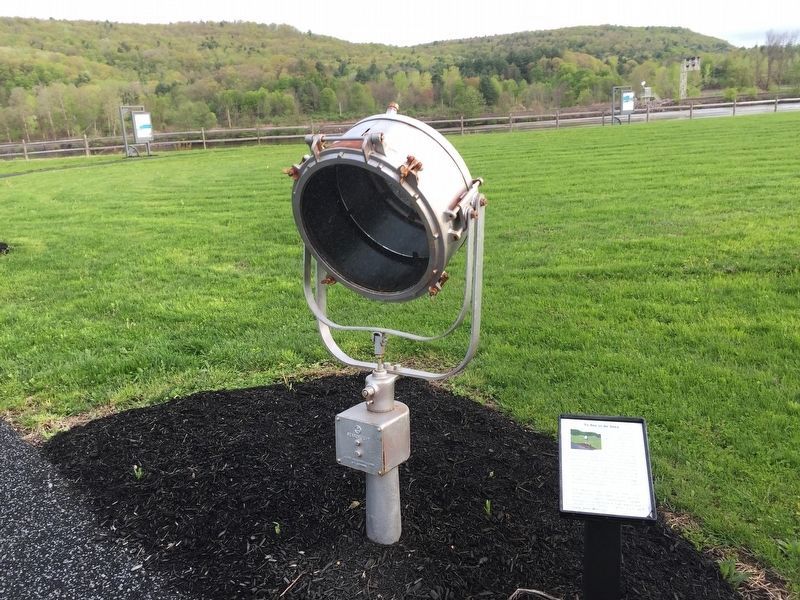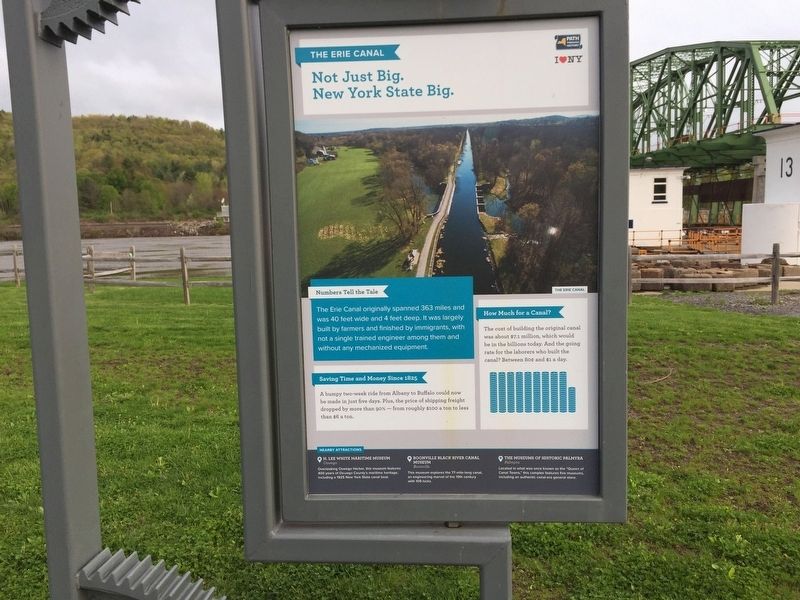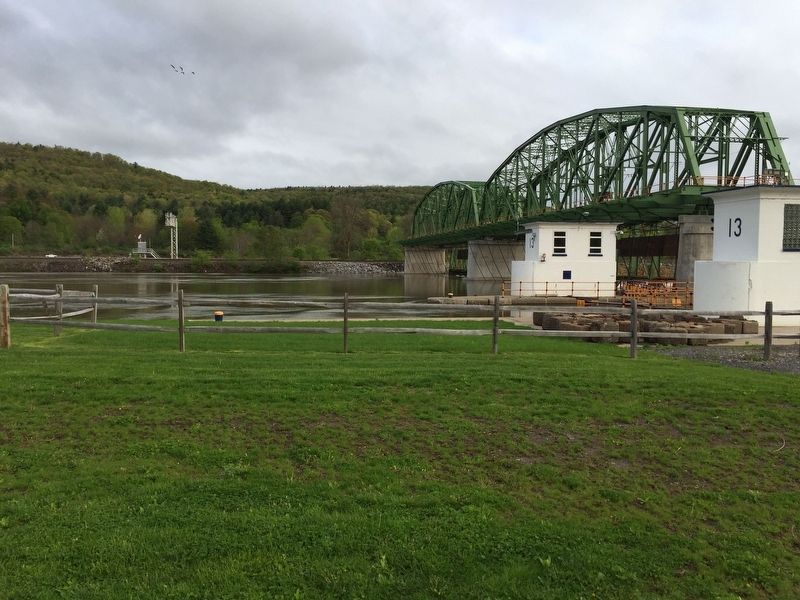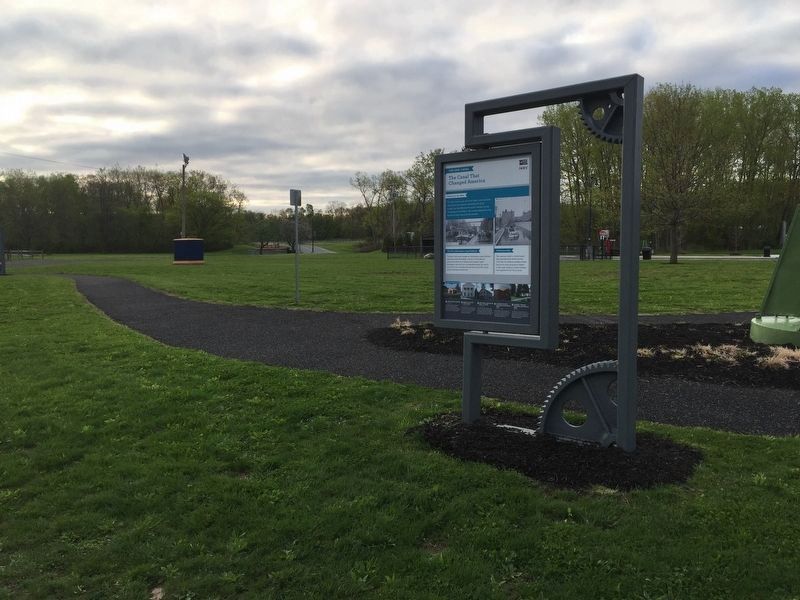Fonda in Montgomery County, New York — The American Northeast (Mid-Atlantic)
The Erie Canal
Not Just Big.
New York State Big
Numbers Tell the Tale
The Erie Canal originally spanned 363 miles and was 40 feet wide and 4 feet deep. It was largely built by farmers and finished by immigrants, with not a single trained engineer among them and without any mechanized equipment.
Saving Time and Money Since 1825
A bumpy two-week ride from Albany to Buffalo could now be made in just five days. Plus, the price of shipping freight dropped by more than 90% — from roughly $100 a ton to less than $6 a ton.
How Much For The Canal?
The cost of building the original canal was $7.1 million, which would be in the billions today. And the going rate for the laborers who built the canal? Between 80 cents to one dollar a day.
Nearby Attractions
R. Lee White Maritime Museum — Oswego
Overlooking Oswego Harbor, this museum features 400 years of Oswego County's maritime heritage, including a 1925 New York State canal boat.
Boonville Black River Canal — Boonville
This museum explores the 77-mile-long canal, an engineering marvel of the 19th century with 109 locks.
The Museums of Historic Palmyra — Palmyra
Located in what was once known as the "Queen of the Canal Towns,” this complex features five museums including an authentic canal-era general store.
Erected by Pathway Through History, I Love NY.
Topics and series. This historical marker is listed in this topic list: Waterways & Vessels. In addition, it is included in the Erie Canal series list. A significant historical year for this entry is 1825.
Location. 42° 55.023′ N, 74° 26.764′ W. Marker is in Fonda, New York, in Montgomery County. Marker can be reached from NY Thruway (Interstate 90), on the right when traveling west. Marker is in the Mohawk Valley Welcome Center. Touch for map. Marker is in this post office area: Fonda NY 12068, United States of America. Touch for directions.
Other nearby markers. At least 8 other markers are within walking distance of this marker. A different marker also named The Erie Canal (within shouting distance of this marker); Dam. That's Not a Bridge? (within shouting distance of this marker); The Mohawk Valley (within shouting distance of this marker); a different marker also named The Mohawk Valley (within shouting distance of this marker); Transportation is King / Modernization (within shouting distance of this marker); a different marker also named The Erie Canal (within shouting distance of this marker); Bollards (within shouting distance of this marker); a different marker also named The Erie Canal (within shouting distance of this marker). Touch for a list and map of all markers in Fonda.

Photographed By Steve Stoessel, May 11, 2019
5. To See or Be Seen
This powerful searchlight was once on one the State’s tugs or maintenance vessels. Since the very first days of the Erie Canal, boats had large lanterns to help point the way during night time travels as the canal operated around the clock. In the canal’s narrow channels, boaters needed to see what other boats might be approaching out of the night to avoid collision. Then as now, the canal is notorious for foggy conditions and such beacons of light provided extra safety.
The State’s tugs, derrick boats and dredges have often been called on to work at night, sometimes under emergency conditions of high water and amidst flood debris. Lights such as these were essential.
The State’s tugs, derrick boats and dredges have often been called on to work at night, sometimes under emergency conditions of high water and amidst flood debris. Lights such as these were essential.
Credits. This page was last revised on May 13, 2019. It was originally submitted on May 12, 2019, by Steve Stoessel of Niskayuna, New York. This page has been viewed 183 times since then and 10 times this year. Photos: 1, 2, 3, 4, 5. submitted on May 12, 2019, by Steve Stoessel of Niskayuna, New York. • Bill Pfingsten was the editor who published this page.



